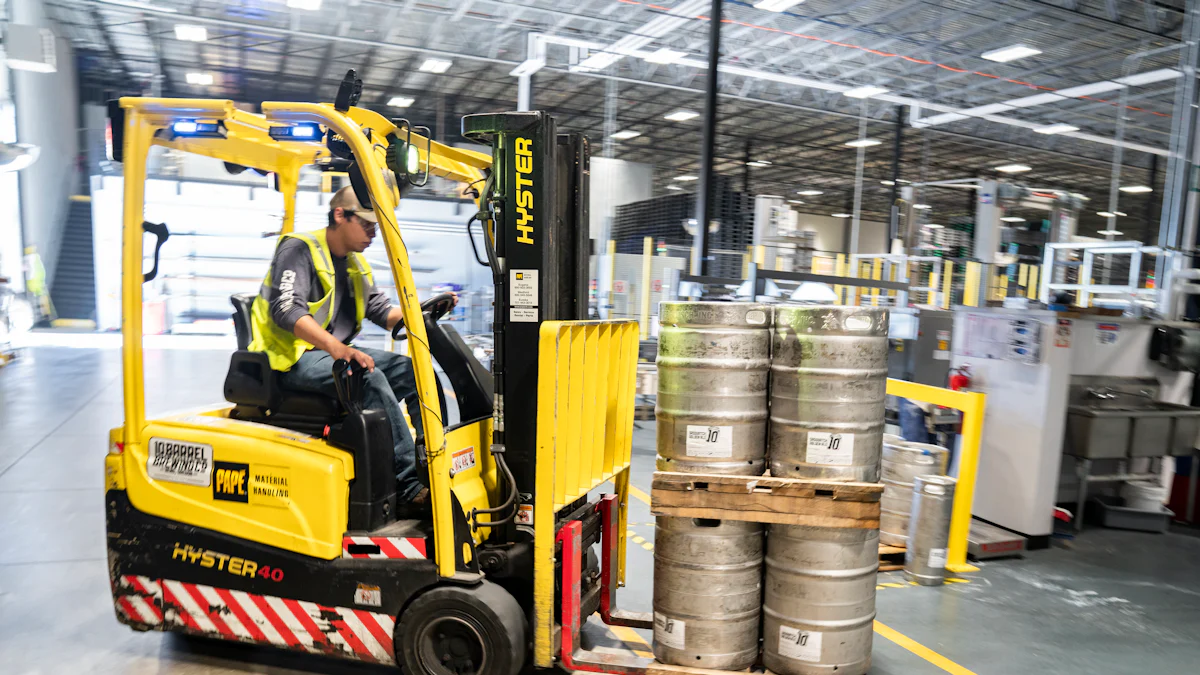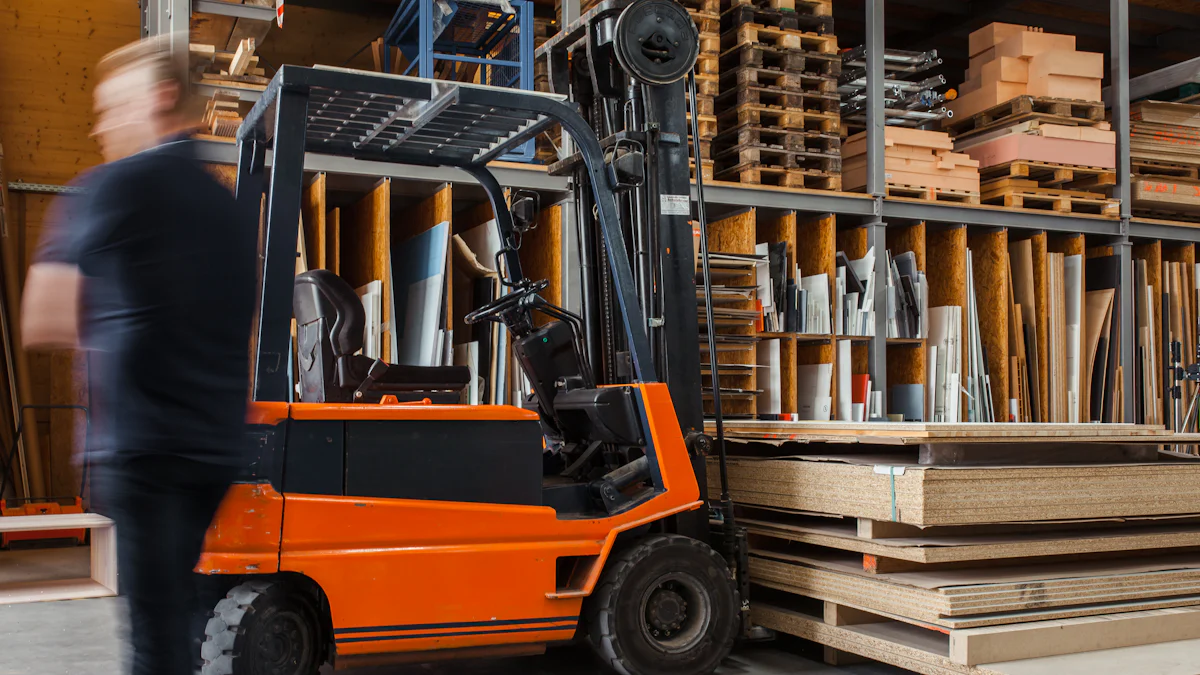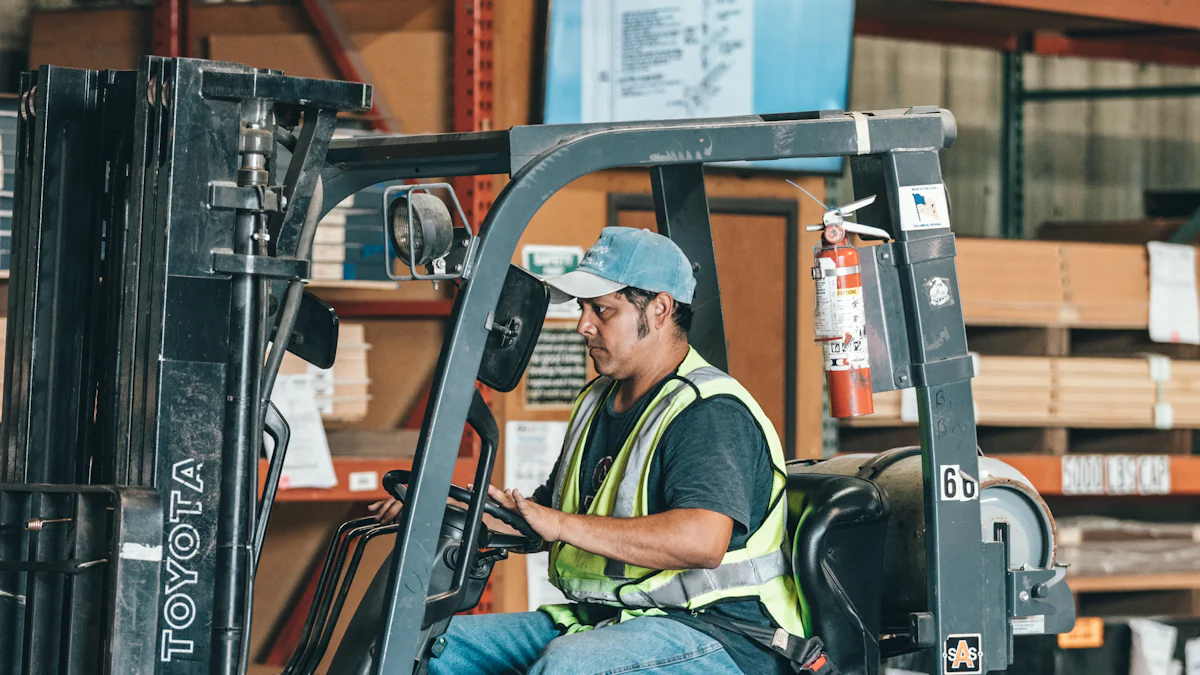
When it comes to warehouse operations, safety should always be the top priority. One crucial equipment frequently used in warehouses is the manual forklift jack, also known as a pallet jack. In this blog, we will delve into essential safety tips for using these tools effectively and preventing accidents. With statistics showing that a significant percentage of forklift accidents can be avoided with proper training, it’s clear that prioritizing safety is key to a successful and secure work environment.
Understanding the Manual Forklift Jack
When it comes to manual forklift jacks, having a clear understanding of their features and functionalities is crucial for safe and efficient warehouse operations. Let’s explore what makes these tools essential in the workplace.
What is a Manual Forklift Jack?
Definition and Purpose
A manual forklift jack is a versatile tool designed to lift and move heavy loads within a warehouse setting. Unlike powered forklifts, manual jacks rely on human power to operate, making them ideal for smaller-scale lifting tasks. Their primary purpose is to simplify the process of transporting pallets and goods, enhancing productivity while reducing manual labor.
Common Uses in Warehouses
Manual pallet jacks are commonly utilized in warehouses for various applications. From loading and unloading trucks to rearranging inventory within the facility, these jacks play a vital role in streamlining material handling processes. Their compact size allows them to maneuver through tight spaces with ease, making them indispensable tools for everyday operations.
Key Features
Weight Capacity
One of the key considerations when using a manual forklift jack is its weight capacity. Different models offer varying load-bearing capabilities, typically ranging from 2,200 lbs to 5,500 lbs. It’s essential to adhere to these limits to prevent overloading the jack, which can compromise safety and lead to accidents.
Components and Design
Manual forklift jacks consist of several essential components that work together to facilitate lifting tasks. From sturdy forks that support pallets to ergonomic handles for maneuvering, each part plays a crucial role in ensuring smooth operation. Understanding the design of the jack enables operators to make informed decisions when handling different loads.
As you familiarize yourself with the intricacies of manual forklift jacks, you gain valuable insights into their capabilities and limitations. This knowledge empowers you to operate these tools safely and effectively, contributing to a secure working environment.
Pre-Operation Safety Checks

Inspecting the Equipment
When inspecting the equipment, always prioritize safety to prevent accidents and ensure smooth operations. Start by closely examining the manual forklift jack for any signs of wear and tear that could compromise its functionality.
Checking for Wear and Tear
Begin by checking the forks for any cracks or bends, as these issues can weaken their ability to support heavy loads. Look out for damaged wheels that may affect the jack’s maneuverability and stability during operation. Ensure that all bolts and nuts are securely fastened to maintain structural integrity.
Ensuring Proper Functionality
After inspecting for physical damage, test the manual pallet jack to verify its proper functionality. Raise and lower the forks to confirm smooth operation without any unusual sounds or resistance. Check the steering mechanism for responsiveness and ease of control, essential for navigating through tight spaces.
Preparing the Work Area
Before using a manual forklift jack, it is crucial to prepare the work area to minimize potential hazards and optimize efficiency. Take proactive measures to create a safe environment that promotes productivity.
Clear Pathways
Clear all pathways where you intend to operate the pallet jack, removing any obstacles that could impede movement or cause accidents. Ensure that there are no loose items on the floor that could pose a tripping hazard. By maintaining clear pathways, you enhance visibility and reduce the risk of collisions.
Adequate Lighting
Proper lighting is essential in a warehouse setting to illuminate work areas effectively. Check that all light fixtures are functional and provide sufficient brightness for clear visibility. Adequate lighting not only enhances safety by reducing shadows but also improves accuracy when positioning loads on shelves or pallets.
Safe Operation Practices

Proper Lifting Techniques
Positioning the Forks
To ensure safe lifting practices, always start by positioning the forks correctly under the pallet. Align the forks evenly on both sides of the pallet to distribute the weight evenly. This proper alignment prevents tilting or shifting during lifting, reducing the risk of accidents.
Lifting and Lowering Loads
When lifting loads with a manual forklift jack, remember to raise them gradually to maintain stability. Avoid sudden movements that could cause the load to shift unexpectedly. Similarly, when lowering loads, do so slowly and steadily to prevent any abrupt drops that may lead to damage or injuries.
Moving the Load
Maintaining Balance
Maintaining balance is crucial when moving loads with a manual forklift jack. Always keep an eye on the position of the load and adjust as needed to prevent tipping. Distribute the weight evenly on the forks and avoid overloading one side, which can compromise stability.
Navigating Corners and Obstacles
When navigating corners or maneuvering around obstacles, take it slow and steady. Approach corners at an angle to improve visibility and reduce blind spots. Be mindful of your surroundings and watch out for potential hazards such as slippery floors or obstructed pathways.
Remember, safety should always be your top priority when operating a manual forklift jack. By following these essential safety tips and practicing caution in every step of the process, you contribute to a secure work environment for yourself and your colleagues.
Stay vigilant, stay safe!
Maintenance and Inspection
Regular Maintenance Routines
Lubrication
Maintaining proper lubrication for your manual forklift jack is crucial to ensure smooth operation and prevent unnecessary wear and tear. By applying lubricants to the moving parts of the jack, you reduce friction and enhance its overall performance. Regularly check the manufacturer’s guidelines for recommended lubrication points and intervals to keep your equipment in optimal condition.
Tightening Loose Parts
Inspecting and tightening any loose parts on your manual forklift jack is a simple yet essential maintenance task. Loose bolts or nuts can compromise the structural integrity of the equipment, leading to potential safety hazards during operation. Use appropriate tools to secure any loose components and ensure that all parts are securely fastened before using the jack.
Scheduled Inspections
Monthly Checks
Performing monthly inspections on your manual forklift jack helps identify any issues early on and prevent costly repairs or accidents down the line. During these checks, examine the overall condition of the jack, including its forks, wheels, and handles. Look out for signs of damage or excessive wear that may affect its performance.
Annual Overhauls
Scheduling annual overhauls for your manual forklift jack is a proactive approach to maintaining its longevity and efficiency. Consider seeking professional assistance or following detailed maintenance guides provided by the manufacturer for a comprehensive inspection. This thorough examination allows you to address any underlying issues and ensure that your jack operates safely throughout the year.
Regular maintenance routines and scheduled inspections are key practices in prolonging the lifespan of your manual forklift jack while promoting a safe working environment. By prioritizing these tasks, you contribute to efficient warehouse operations and minimize downtime caused by unexpected equipment failures.
Remember, a well-maintained manual forklift jack not only enhances productivity but also safeguards against potential risks in the workplace. Stay diligent in caring for your equipment, and it will serve you reliably in your daily material handling tasks.
Patents:
- Benefits of Forklift Maintenance Checklists: Forklift maintenance checklists provide a systematic approach to inspecting and servicing forklifts, offering numerous benefits that contribute to overall safety, efficiency, and reliability.
- Daily Maintenance Checklist for Forklifts: For intensive-use environments like warehouses or manufacturing facilities, a daily maintenance checklist is recommended before each shift to ensure optimal working condition.
- Expert Tips for Maintaining Forklift Safety: Regular maintenance should be scheduled according to manufacturer recommendations; this includes oil changes and filter replacements when necessary.
- Documents Reviewed for Forklift Investigation: OSHA 1910.178 Powered Industrial Trucks regulations were reviewed along with ANSI 56.1 Safety Standard manuals related to powered industrial trucks.
Training and Certification
Importance of Training
Safety Training Programs
When it comes to operating a manual forklift jack, undergoing safety training programs is crucial. These programs equip you with the necessary knowledge and skills to handle the equipment safely and efficiently. By participating in training sessions, you learn about proper lifting techniques, load distribution, and hazard awareness. This knowledge not only enhances your own safety but also contributes to a secure work environment for everyone.
Hands-On Practice
In addition to theoretical knowledge, hands-on practice plays a vital role in mastering the operation of a manual forklift jack. Practical experience allows you to apply what you’ve learned in real-world scenarios, improving your confidence and proficiency. Through hands-on practice, you develop muscle memory for safe handling practices and become adept at maneuvering the equipment with precision.
Certification Requirements
Legal Requirements
While certification is not mandatory for operating manual pallet jacks, some jurisdictions may have specific legal requirements regarding training and competence. Adhering to these regulations ensures that operators are adequately prepared to handle the equipment safely. Certification can also serve as proof of competency in case of workplace inspections or audits, demonstrating your commitment to safety standards.
Employer Responsibilities
Employers hold a significant responsibility in ensuring that their employees receive proper training and guidance on using manual forklift jacks. It is essential for employers to provide access to safety training programs and practical instruction to equip their staff with the necessary skills. By investing in employee training, employers demonstrate their commitment to maintaining a safe working environment and reducing the risk of accidents.
Certification may not be a legal requirement in all cases, but it serves as a valuable validation of your skills and knowledge in operating manual forklift jacks. By prioritizing training and certification, you contribute to a culture of safety within your workplace while enhancing your own expertise in material handling operations.
Remember, continuous learning and skill development are key elements in promoting safety and efficiency in warehouse operations. Stay proactive in seeking opportunities for training and certification to elevate your capabilities as a manual forklift jack operator.
Patents:
- Benefits of Forklift Maintenance Checklists: Forklift maintenance checklists provide a systematic approach to inspecting and servicing forklifts, offering numerous benefits that contribute to overall safety, efficiency, and reliability.
- Daily Maintenance Checklist for Forklifts: For intensive-use environments like warehouses or manufacturing facilities, a daily maintenance checklist is recommended before each shift to ensure optimal working condition.
- Expert Tips for Maintaining Forklift Safety: Regular maintenance should be scheduled according to manufacturer recommendations; this includes oil changes and filter replacements when necessary.
- Documents Reviewed for Forklift Investigation: OSHA 1910.178 Powered Industrial Trucks regulations were reviewed along with ANSI 56.1 Safety Standard manuals related to powered industrial trucks.
Recap: Prioritize safety in your daily operations to foster a culture where employees feel comfortable voicing any concerns. Remember, a secure work environment is essential for efficient warehouse operations.
Summary of Key Safety Tips:
- Regularly inspect the equipment for wear and tear.
- Prepare the work area by clearing pathways and ensuring adequate lighting.
- Follow proper lifting techniques and maintain load balance.
- Conduct regular maintenance routines and scheduled inspections.
- Emphasize the importance of training and certification for safe operation.
Encouragement: By implementing these safety tips and guidelines, you contribute to a workplace that values safety above all else. Stay vigilant, stay safe!
Post time: Jun-06-2024
